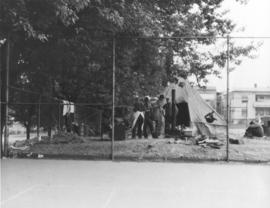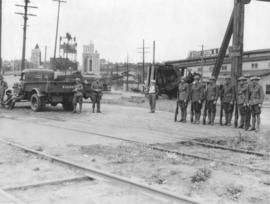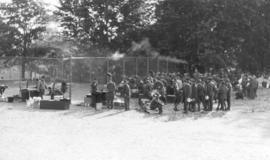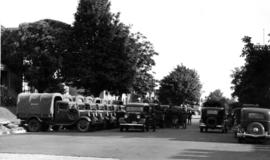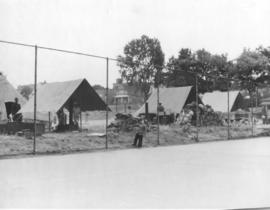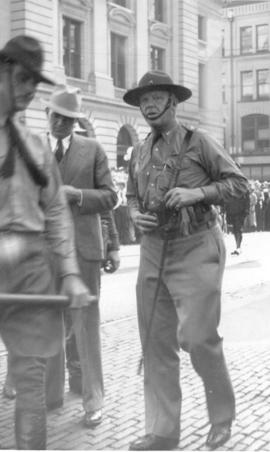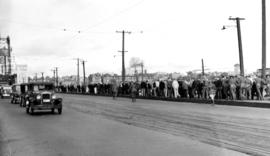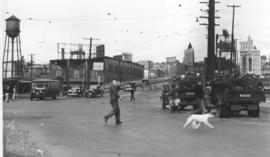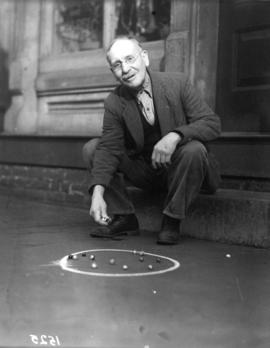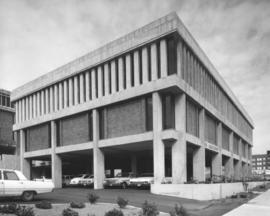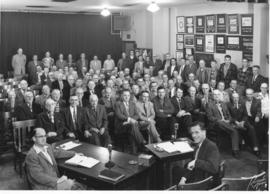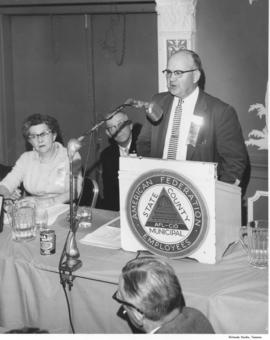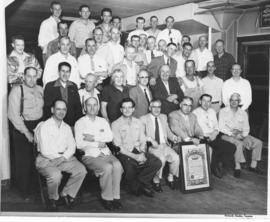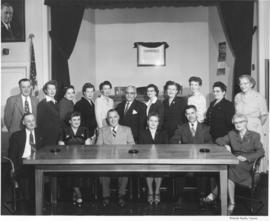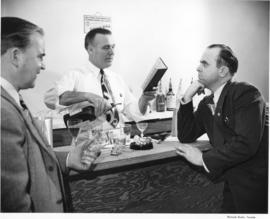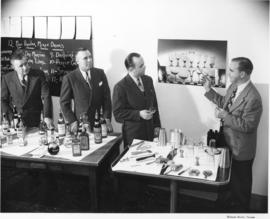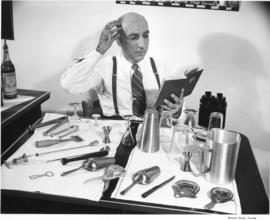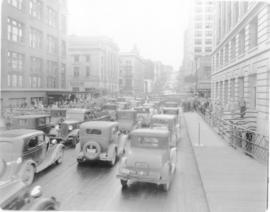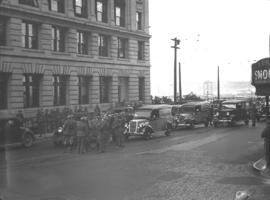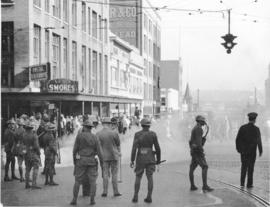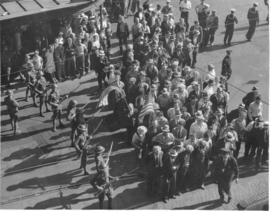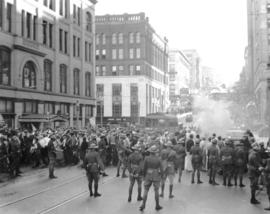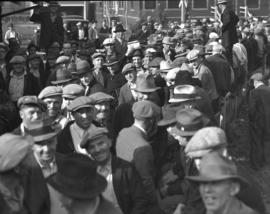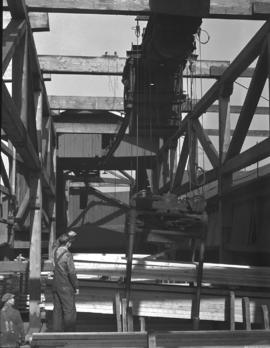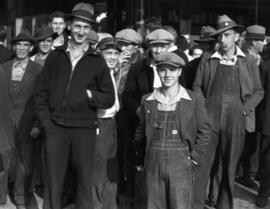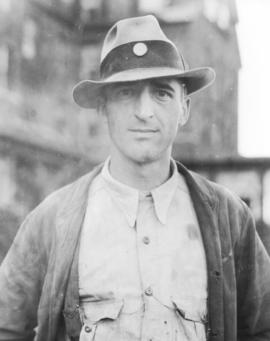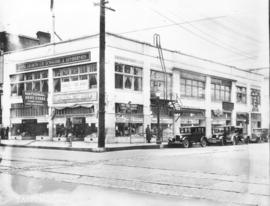- Item
- 1935-06
Part of Chapin Bowen Photographs
Mess tents pitched on the old Central School playgrounds across from the Armory as cooks prepare to feed the men of the second battalion of the Washington National Guard 161st Infantry called out to control the violence associated with the 1935 Lumber workers' strike. In June of 1935, the mills in Tacoma and surrounded areas attempted to reopen with workers willing to return to work. Violence erupted between the returning workers and the strikers. Governor Clarence Martin ordered the Guard in on June 23rd, 1935 after reports that local authorities were unable to handle the situation. It was the second time the Guard was ordered out since the World War, the other two times being in 1919 and 1933. (TNT 6/24/1935, pg. 1 & 2)
